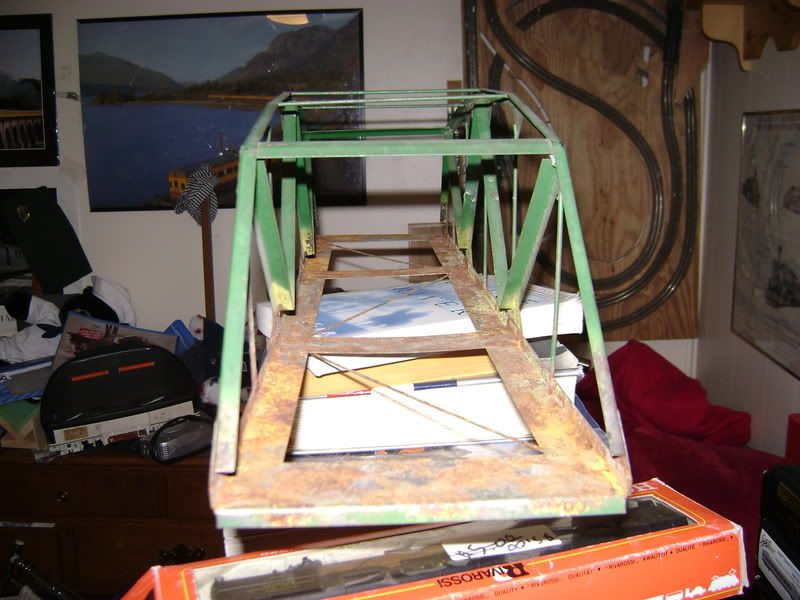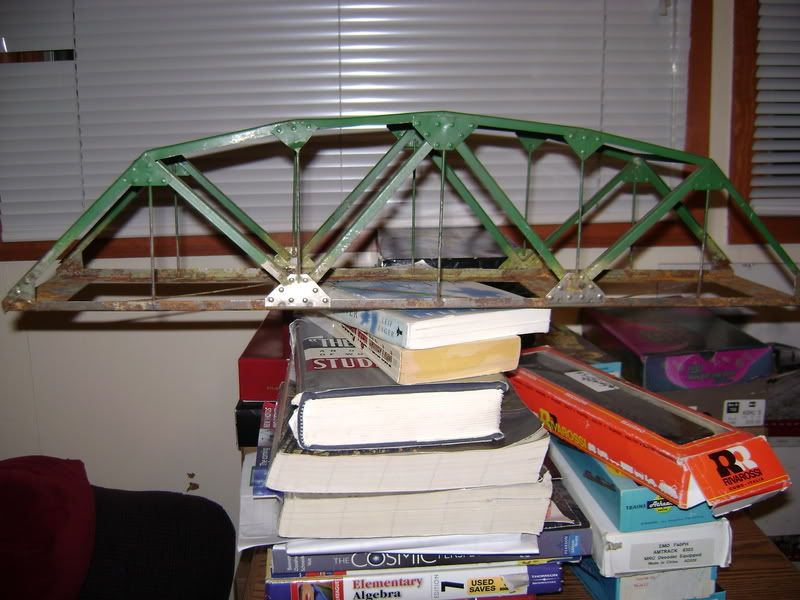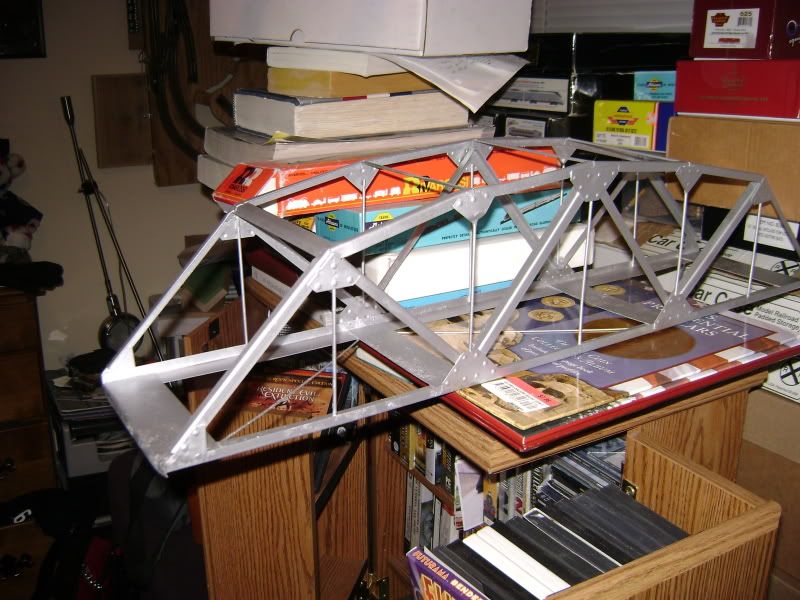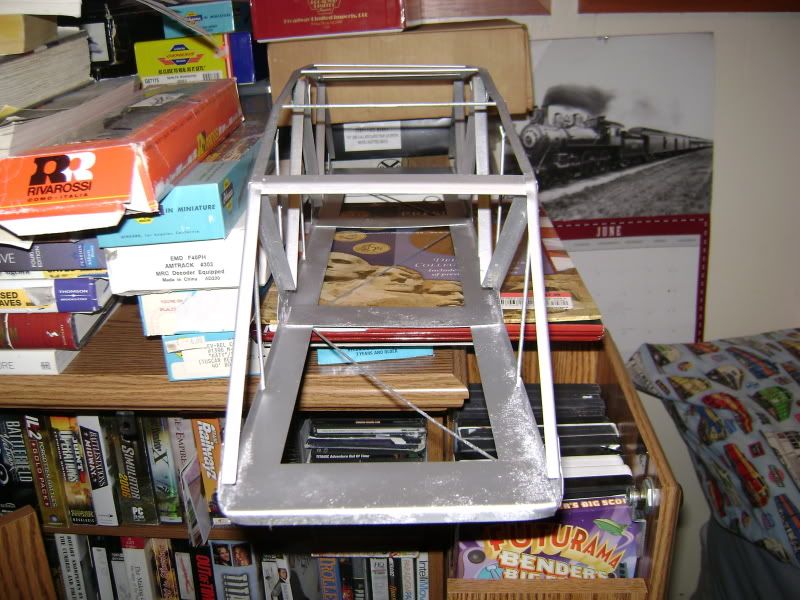I have an old steel Truss bridge. I believe that it was built for S scale, no idea if its scratch built or mass produced. Anyway, Its got lots of surface rust that needs to be cleaned off, and its painted green. I'm going to take a good old wire brush to it to clean up the rust, and then I wanted to repaint it into a realistic color.
I was wondering what color would look realistic for a railroad truss bridge. The most common colors I have seen are silver, black, and a walthers plastic kit is sort of a grey color.
The bridge will ultimately be used on our club modular layout, as a modular, and as easy access in and out of the layout. We do HO, so the larger scale of the bridge will be perfect for double track HO, and more then strong enough to support even our heaviest locomotives.
Anyway, what color would be realistic? Also, what sort of decking should be used? I want it to look like a realistic bridge, so what is the easiest way to lay down a bridge deck that flex track could be laid over, or should I try and buy actual bridge track
My goal is to finish in about a month with the most realistic bridge possible, and have it look very good.
I was wondering what color would look realistic for a railroad truss bridge. The most common colors I have seen are silver, black, and a walthers plastic kit is sort of a grey color.
The bridge will ultimately be used on our club modular layout, as a modular, and as easy access in and out of the layout. We do HO, so the larger scale of the bridge will be perfect for double track HO, and more then strong enough to support even our heaviest locomotives.
Anyway, what color would be realistic? Also, what sort of decking should be used? I want it to look like a realistic bridge, so what is the easiest way to lay down a bridge deck that flex track could be laid over, or should I try and buy actual bridge track
My goal is to finish in about a month with the most realistic bridge possible, and have it look very good.




